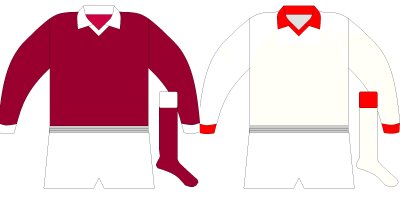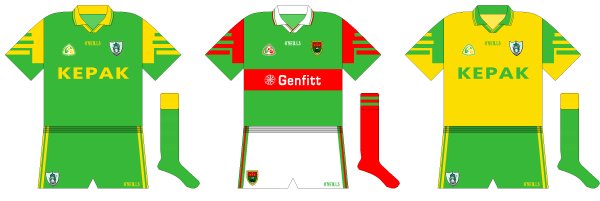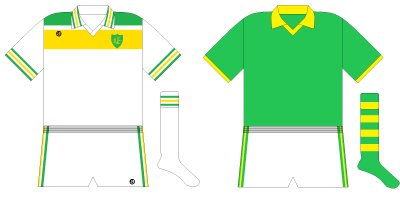It’s 1919 and Cork are preparing to play Dublin in the All-Ireland senior hurling final.
Things have gone wrong, though. Some charming men representing the British forces decided that Cork’s jerseys, blue with a gold ‘C’ on the front, are not fashionable enough and took it upon themselves to raid the county board offices at 20 Maylor St and remove the offending items.
As O’Neills Sportswear has only been established the previous year, they are not in a position to do a quick run of jerseys and so the county board are forced to borrow a red set from the Fr O’Leary Temperance Association Team.
Cork, with captain Jimmy ‘Major’ Kennedy scoring four goals and having two more disallowed, triumph over Dublin on a scoreline of 6-4 to 2-4 and the legend of the ‘blood and bandage’ is born as the red and white kit is permanently retained.
While that change of jersey was brought about by a clash of cultures, shall we say, any subsequent deviations of counties’ normal outfits for All-Ireland finals have been due to a clash of colours and, given that most of the sides normally competing for honours have distinctive designs, most of the changes have occurred in football.
As with the Cork team of 1919, sometimes winning change colours have been seen as a lucky charm and retained in perpetuity, like when Roscommon met Cavan in the 1943 final. Used to wearing blue shirts with gold bands, the Connacht county were forced to change and, after winning, kept the primrose tops with blue collars and cuffs.
In a similar vein, Donegal, who once wore a Kerry-style green with a gold hoop, were forced to don gold jerseys and green shorts for their 1992 semi-final with Mayo, who wore the red above the green. After triumphing, Donegal retained the alternative kit for the final against Dublin, which they also won, and they still wear predominantly gold jerseys.
The 2010 final is the first decider since 2004 to be deemed a colour clash. On that occasion, Mayo wore red jerseys against Kerry, though two years later both sides wore their normal kit. When they met in 1997, the only concession to a clash was Kerry playing in jerseys with the gold hoop twice as wide as normal.
The year before that, Mayo had also been involved in a colour-clash confusion. For the final with Meath, the Royals wore green shorts with their normal strip to help distinguish the sides, but after the draw between the sides, Meath captain Tommy Dowd explained that at one stage he had passed to Mayo’s Pat Holmes due to thinking he was a team-mate.
Both sides were instructed to change for the replay; Meath did but Mayo didn’t, however playing in gold seemed to work for Sean Boylan’s men.
A change also worked for Cork in 1973, playing in white shirts – as they are today – against Galway. In a bid to aid TV viewers but still retain their colours, the sides had tossed a coin to decide which of them would wear a reversal of their usual jerseys. To help prepare for the game with the Tribesmen, Cork borrowed the jerseys of Tyrone, who they had beaten in the semi-final, and it seemed to work as a famine of 28 years was ended.
Prior to that, Cork had worn the blue of Munster, unsuccessfully, against Galway and Louth, who also wore provincial colours, in 1956 and ’57 respectively. Incidentally, all of Down’s All-Ireland final wins have come while wearing their distinctive red and black, though they did beat Cork in the 1994 semi-final wearing the Ulster colours of gold and black.
While Cork have worn red, white and blue in All-Ireland finals, one would never expect to see them in green and gold. Kerry, however, have worn red jerseys in the decider, having had to borrow the kit of county champions Dingle in 1939 after losing the toss against Meath.
Since then, the Kingdom have usually worn blue when the need arose, as in the final of 1972, when beaten by Offaly, outfitted in a clever reinterpretation of their colours – green shirts, white shorts and gold socks.
Nine years later, Offaly were clad in white with Kerry in a new adidas kit, still mainly green but with gold across the shoulders and green shorts, as they completed the four-in-a-row.
When they were brought together again in 1982, the Kingdom opted for a more straightforward kit, plain green tops with gold collars and cuffs. Seamus Darby’s goal ensured, however, that the white Offaly kit with green and gold trim would be remembered as long as football would be talked about.
In years to come, will the 2010 final be recalled more fondly by those in white or those in gold and black?
Illustrations: Top, Galway v Cork (1973); middle, Meath v Mayo (1996); bottom, Offaly v Kerry (1982).


